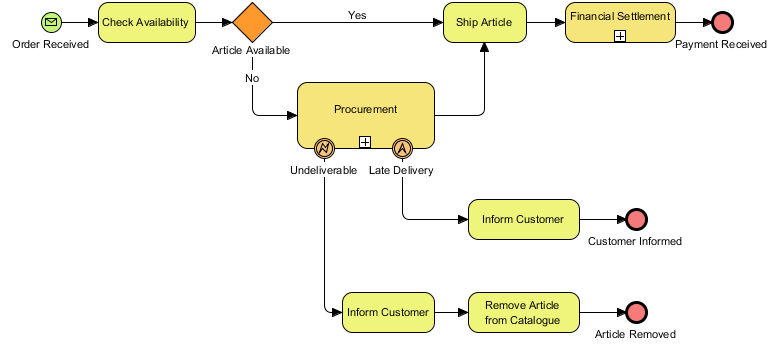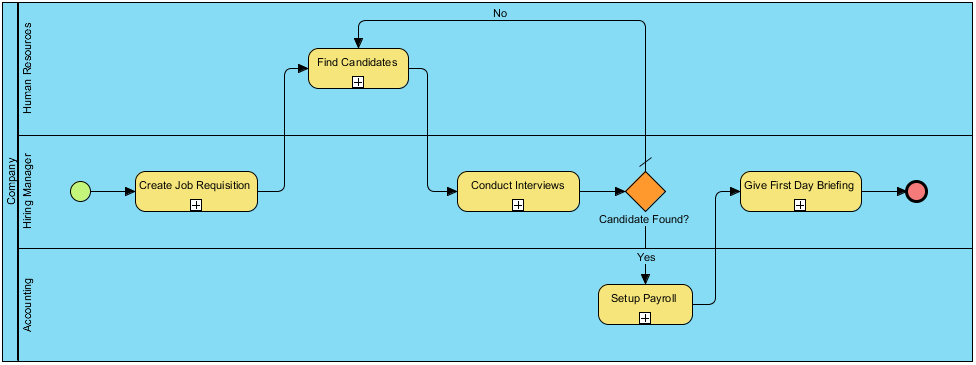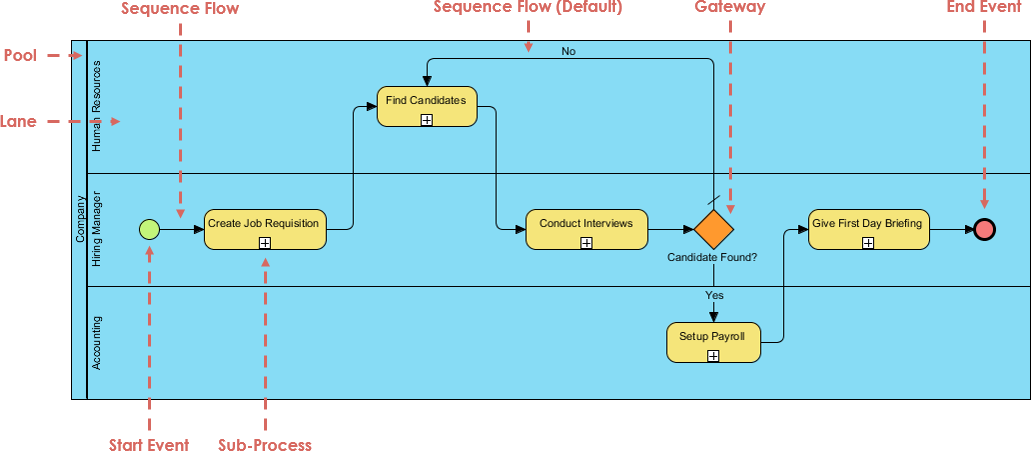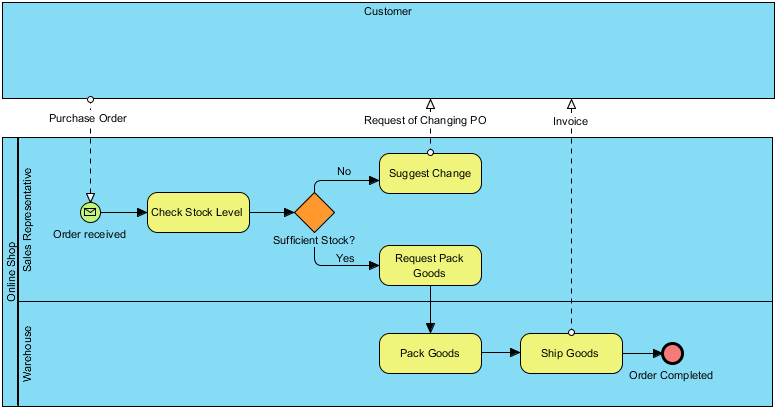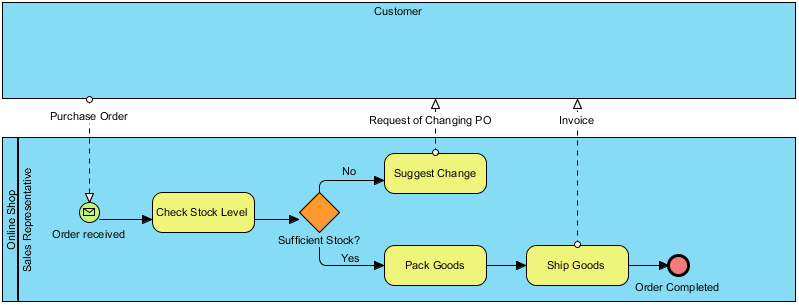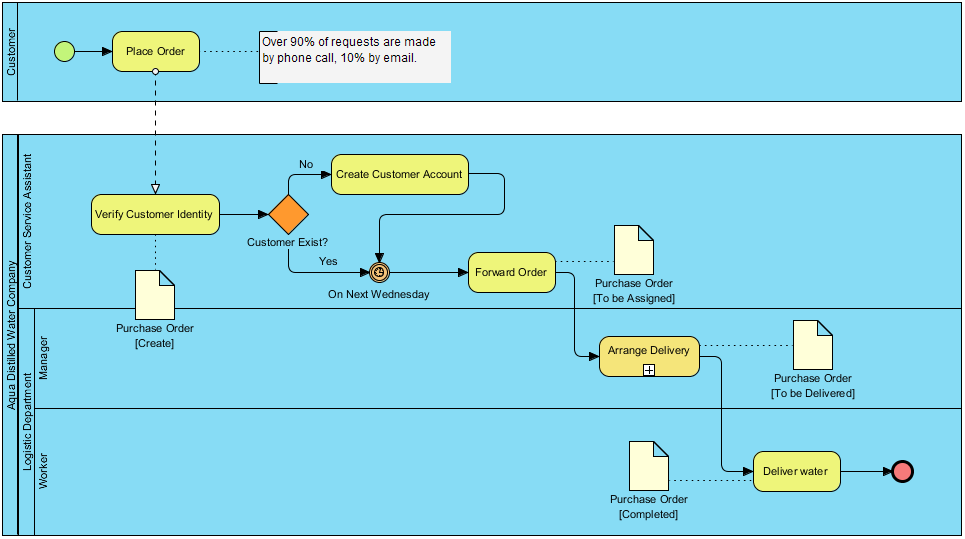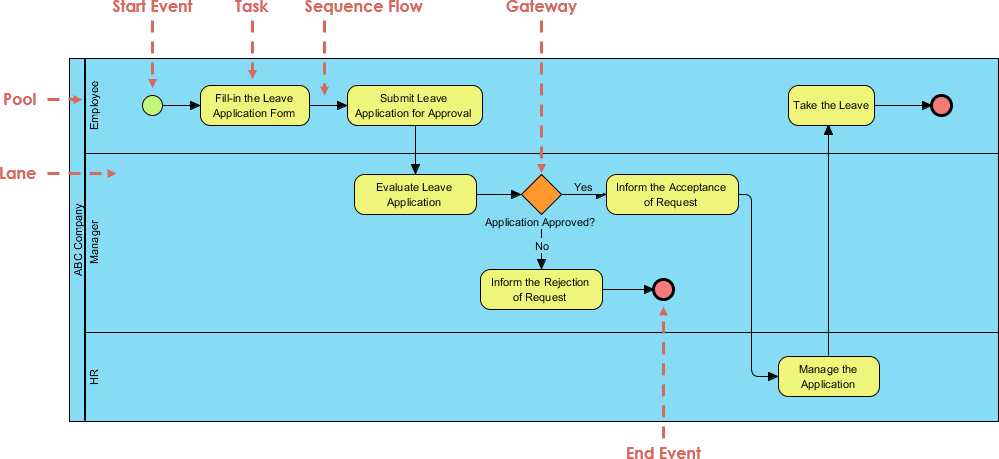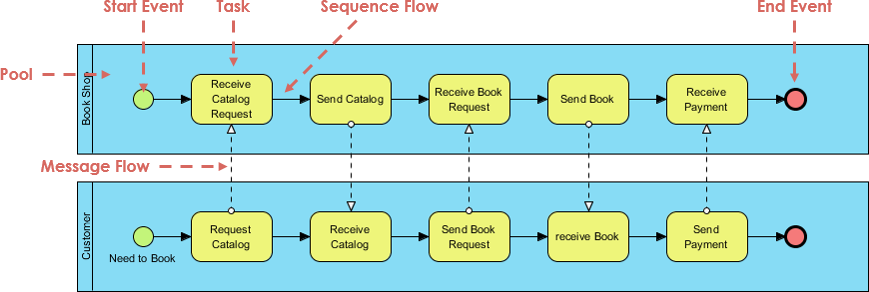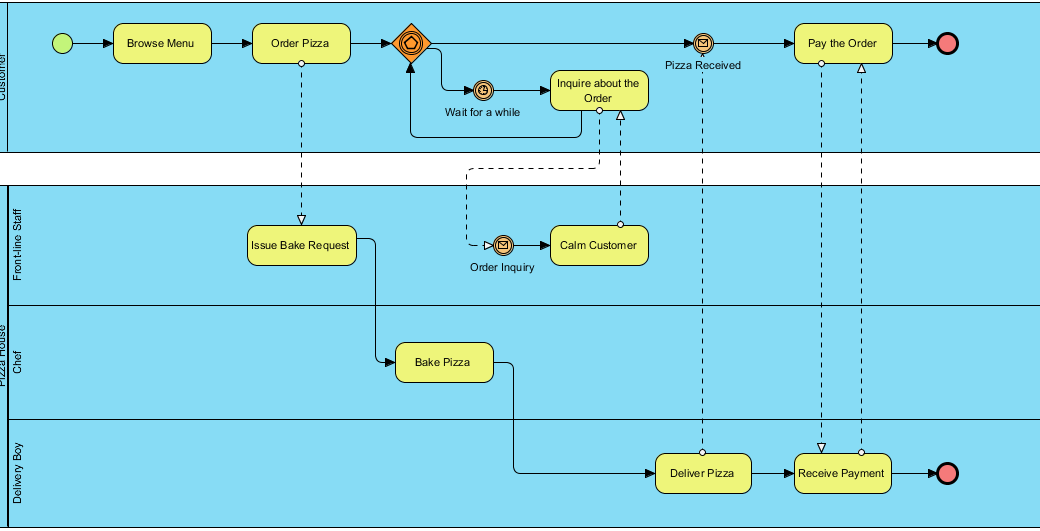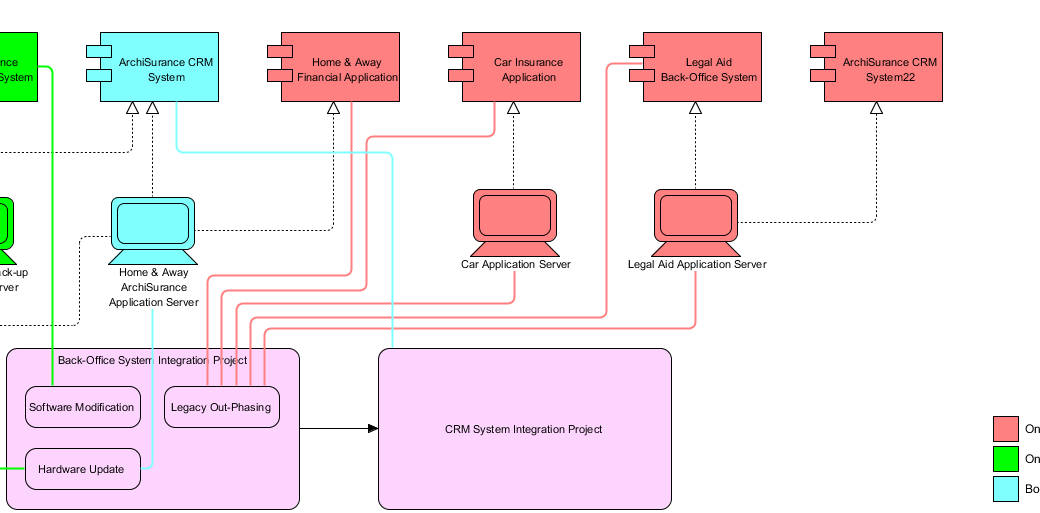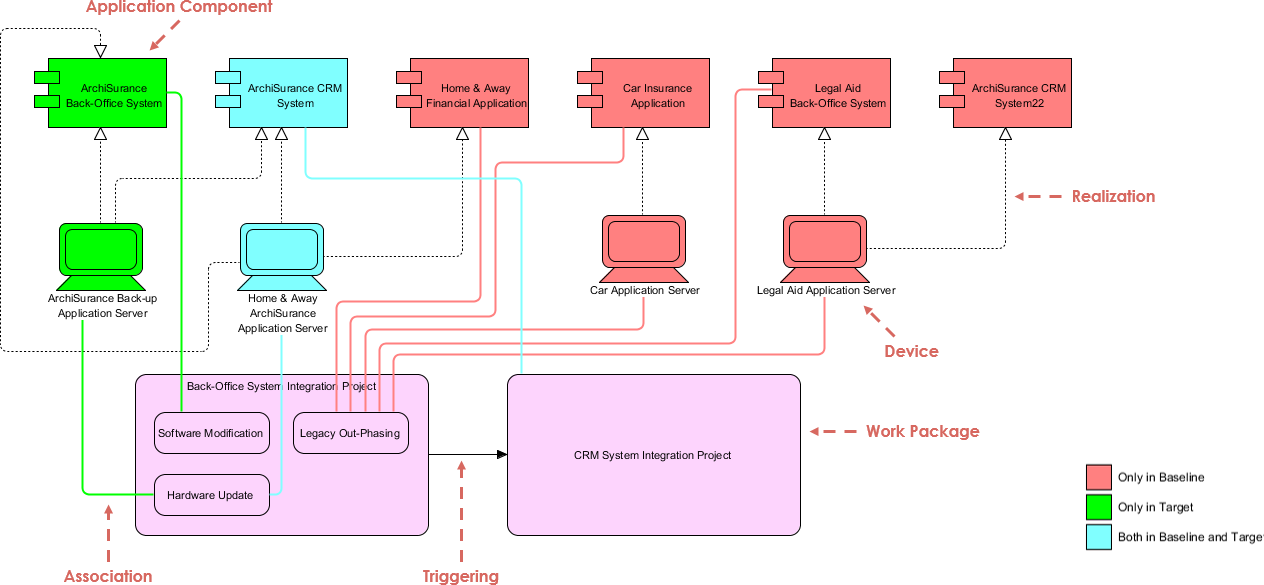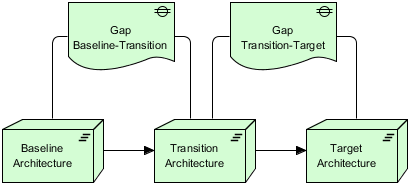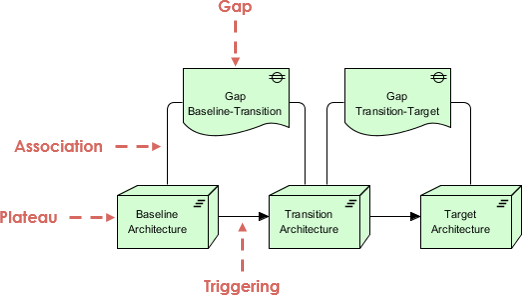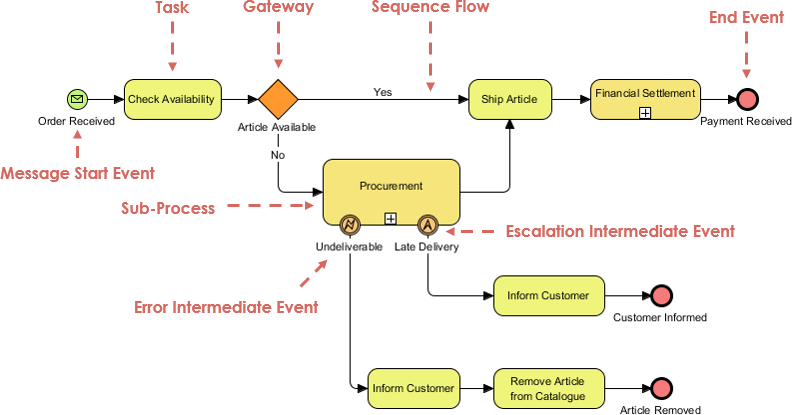
This is a BPMN diagram example. The order fulfilment process starts after receiving an order message and continues to check whether the ordered article is available or not. An available article is shipped to the customer followed by a financial settlement, which is a collapsed sub-process in this diagram. In case that an article is not available, it has to be procured by calling the procurement sub-process. Please note that the shape of this collapsed sub-process is thickly bordered which means that it is a call activity. It is like a wrapper for a globally defined task or, like in this case, sub-process.
*Extracted from OMG BPMN 2.0 by Example
Import into your Project
Open diagram in Visual Paradigm [?]Copy the URL below, paste it in the Open Project windows of Visual Paradigm and press Enter to open it |
Posted by:
